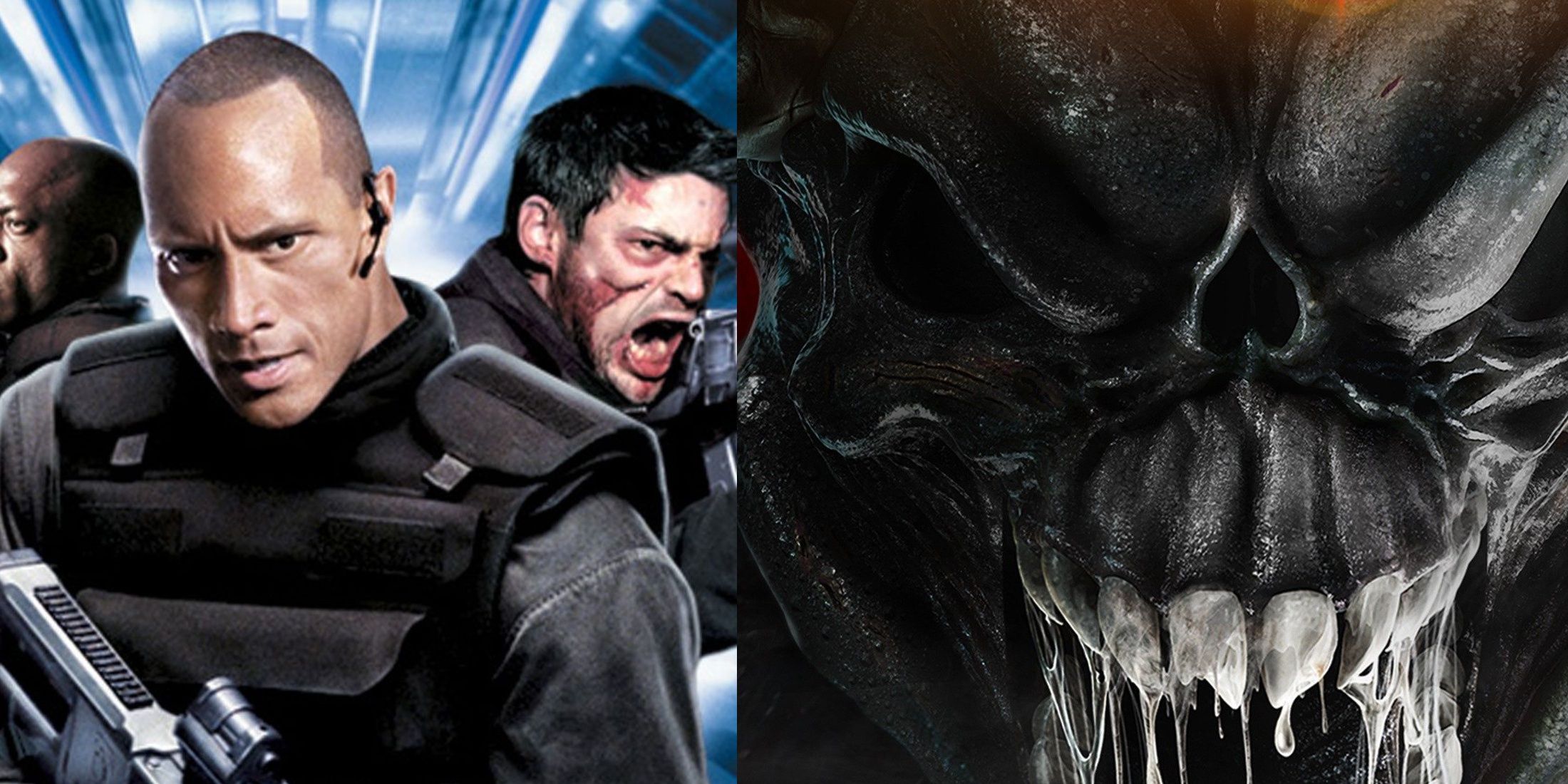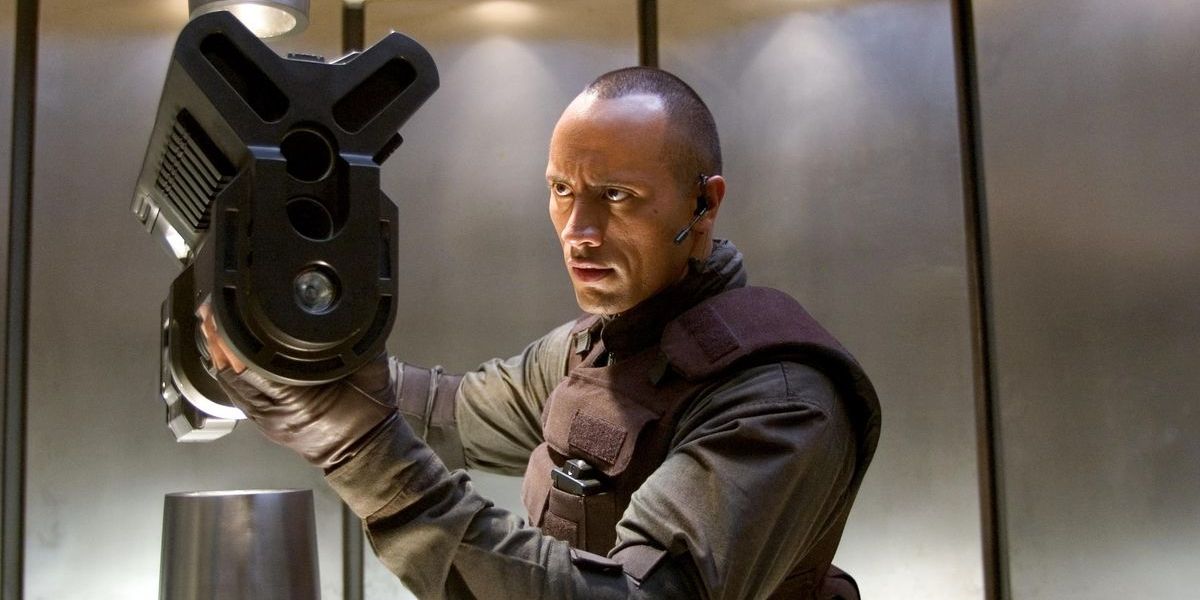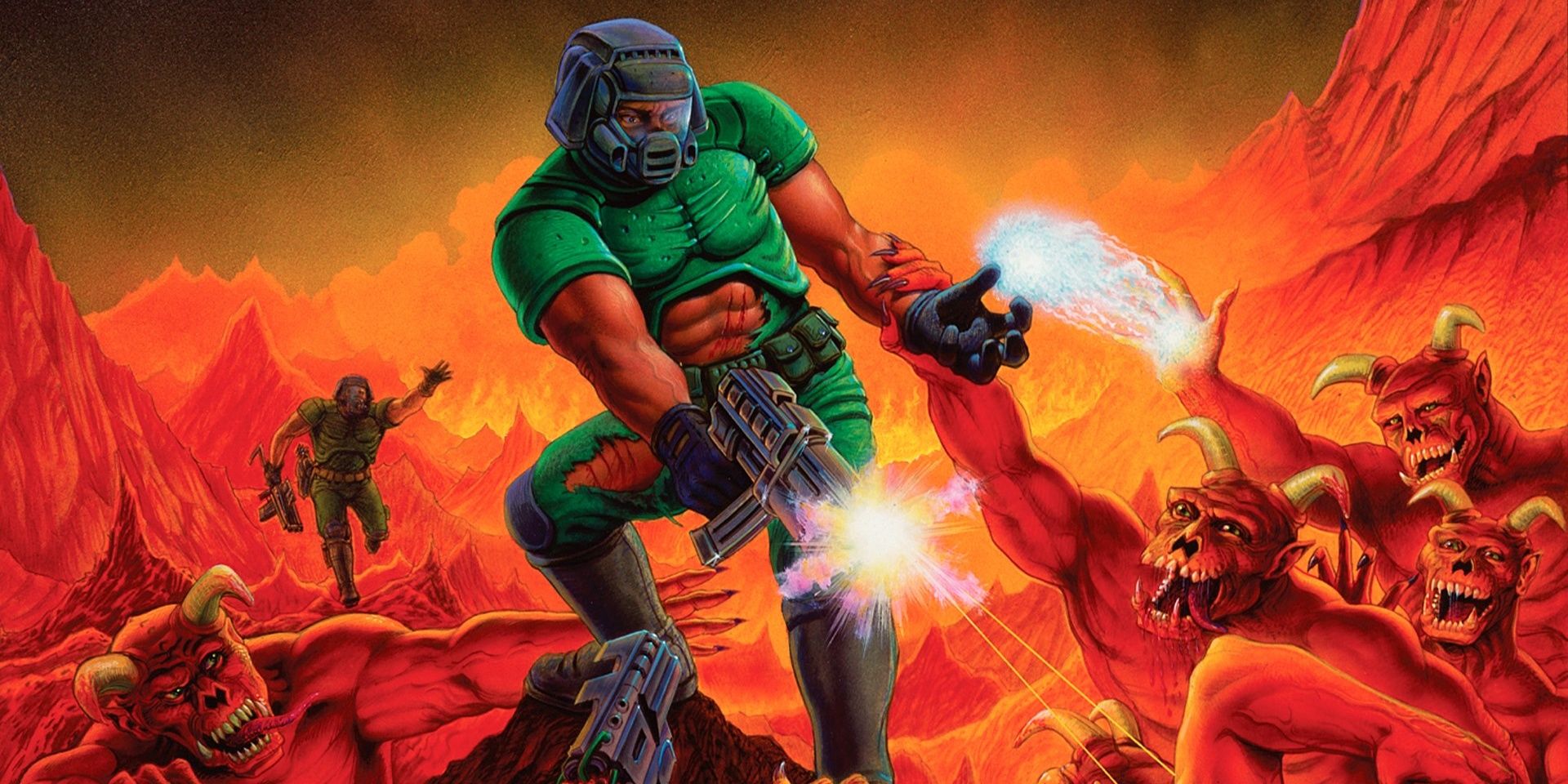Fans of the groundbreaking first-person shooter Doom might think that a game with that simple a storyline would be pretty hard to screw up. Well, turns out two unrelated crews of filmmakers separated by fourteen years found completely different ways to make a disastrous adaptation.
Doom is a franchise that has stood strong since 1993, one of the most prolific and iconic names in video game history. The original game famously runs on anything, while the modern iterations regularly become best sellers. The brand has spawned a series of novels and comics, alongside board and tabletop games and the narrative has always remained fairly straightforward. The two film adaptations of the franchise are different in almost every way, making for an intriguing comparision.
Doom (2005)
The first Doom film took over a decade to create, from rights acquisition to screenwriting to full production. Greenlit after the success of Doom II, the film rights changed hands multiple times before the film began its long process. The film is directed by Andrzej Bartkowiak, Polish cinematographer and director behind such classics as Cradle 2 the Grave or Street Fighter: The Legend of Chun-Li. There's some real star power behind the film's cast, though most of its heavy hitters had not hit their peak yet. The film's hero, the fabulously edgy-named John "Reaper" Grimm, was portrayed by The Boys star Karl Urban. Alongside him are Rosamund Pike of Gone Girl and Dwayne Johnson, simply credited as The Rock at the time. Upon initial release, the film was a box office disaster, but some did credit it as the best video game movie of the era despite its flaws.
Doom is the story of a handful of Marines, sent to investigate a distress signal in the mysterious Martian city known as the Ark. Once there, the squad finds that the series' regular villain Union Aerospace Corporation (UAC) has been conducting illicit experimentation, including a strange drug that turns its victims into an entirely new species. Doom is a very generic film, a good example of a common problem in video game cinema. One could be convinced that the film was thrown together before securing the brand name, then barely shifted once the tie-in was established. A single action scene borrows the game's first-person aesthetic, coming across more as a gimmick than a stylistic choice. The most original element of the film is worse than simply being generic, it's deeply morally questionable.
Much of the plot centers around C24, a drug created for the film which grants its victims superhuman powers or brutally deforms them into monsters. The deciding factor is, essentially, moral superiority. The film contends that some people are inherently good and others are inherently villainous, and the drug has some way of discerning that essential truth and rewarding or punishing accordingly. In Doom's world, people are either good or evil, and their cruel or selfish deeds are not what decide their fate. This single ill-conceived element turns a dull story into an existential curiosity. It's the kind of storytelling choice that could pass by unnoticed in a good film, but Doom is a fascinating mess, so its alien morality paints the entire narrative in a strange light.
Doom is a dull, uncreative, badly written mess of a film that sets out to accomplish little and delivers even less. Its excellent cast does their best with the material they're given, veteran character actor Richard Brake is the only one that really feels at home in the piece. As an adaptation, the film gets in its references, but they're only surface-level observations. The spirit of Doom is not present anywhere in its first film. Fourteen years would pass before a team would try again.
Doom: Annihilation (2019)
Released straight to video and immediately disavowed by game developers id Software, Annihilation had a lot going against it from the start. The film was the pet project of writer and director Tony Giglio, who began pitching his take on the franchise in 2015. Initial marketing earned immense public hate from fans, who responded overwhelmingly negatively to both of the film's teasers. The film was dumped onto Blu-ray and On-demand services before reaching Netflix a few months later, earning a pitiful $75,831. Any film whose sales numbers accurately account down to the last digit can be safely assumed to be a disaster.
Doom: Annihilation is a complete disaster. Filled to bursting with cheap visual effects, pulled along by lifeless performances, and dragged down by never-ending repetitive action scenes, the film lasts just over 90 minutes and runs out of ideas around 20. The plot centers around a crew of Marines tasked with defending an off-world research base that is gradually filled with zombies and demons. The main character, Joan Dark (a not-so-clever and painfully obvious allusion to Joan of Arc), portrayed by Amy Manson, stands as the film's answer to the classic Doomguy, but fails to match the charisma of a mute soldier in a suit of power armor. Almost impressively, this film was despised before it saw daylight, then earned every bit of hate with its final product.
The Verdict
Doom is a mess, but a handful of decent performances, a decent action scene or two, and the bizarre spectacle of its backward moral reasoning make it a fascinating watch. Doom: Annihilation is clearly the worse film overall. Annihilation is not a sequel to the original film, but it is most reminiscent of Disney's approach to straight to video knock-off sequels. Essentially the same plot, with less interesting ideas and somehow worse execution. Annihilation tries to capture the brutal spirit of Doom but forgot the most essential element; fun.




